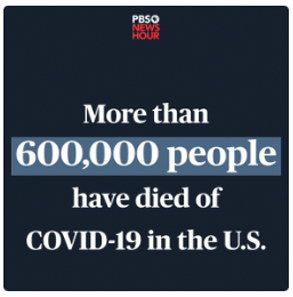Wegovy’s New Indication Turns Up Heat on Employers Sweating GLP-1 Costs
-
Apr 11, 2024
When the FDA approved Novo Nordisk’s Wegovy (semaglutide) for reducing the risk of serious heart problems, it paved the way for Medicare Part D plans to cover the drug. Industry experts also predict that the drug’s expanded indication will pressure more commercial insurers and their plan-sponsor clients to cover the pricey — and increasingly popular — medication.
“The pressure is just going to be too much” for commercial plans to avoid broadening their GLP-1 coverage, says Debra Devereaux, principal and chief pharmacy/clinical officer at Rebellis Group. However, she cautions that there may not be many significant coverage-policy changes this year.
Many commercial health plans already cover the drug for weight loss. Data from MMIT, AIS Health’s parent company, show that in 31 states, pharmacy formularies that cover more than half of commercial-plan enrollees categorize Wegovy as “preferred” or “preferred with utilization management restrictions.”
During the annual “Wall Street Comes to Washington Health Care Roundtable” on April 8, equity analysts said GLP-1s like Wegovy will undoubtedly continue to keep employer plan sponsors on their toes.
“This stuff’s really expensive, and they’re freaking out,” Deutsche Bank Managing Director George Hill said during the panel discussion, regarding how employers are coping with the rise of GLP-1s.
Hill pointed out that GLP-1s — which have already proven extremely effective at curbing Type 2 diabetes and inducing weight loss — may still have more surprises in store for the health care system. Noting that a recently published academic article suggested that the GLP-1 lixisenatide may be effective at slowing the progression of Parkinson’s disease, Hill quipped that if GLP-1s work for Alzheimer’s disease, “the whole country’s going broke.”
New Indication Led to CMS Guidance
With its new indication, Wegovybecame the first weight loss medication to also be approved to help prevent life-threatening cardiovascular events — including heart attacks and strokes — in adults with cardiovascular disease who either have obesity or are overweight. Part D plans cannot cover weight-loss medications, but CMS in late March issued guidance clarifying that anti-obesity medications that receive FDA approval for an additional medically accepted indication can be considered a Part D drug for that specific use.
Wegovy, from Novo Nordisk, is also approved to treat Type 2 diabetes; when used for that indication, it goes by the brand name Ozempic.
After Wegovy gained its new indication, CVS Health Corp., Elevance Health, Inc. and Kaiser Permanente all said their Part D plans will cover it for the prevention of serious heart issues. Additionally, Elevance said its commercial plans will cover Wegovy for its new cardiac use.
The closest competitors to Wegovy and Ozempic come from Eli Lilly, which manufactures the Type 2 diabetes drug Mounjaro (tirezepatide) and its weight-loss cousin Zepbound. But other big-name drugmakers are racing to develop their own blockbuster GLP-1s to take advantage of the red-hot demand for such medications.
When weighing whether to cover GLP-1s, employer plan sponsors at different types of companies will likely arrive at different conclusions, Hill suggested. Self-insured employers tend to want to cover the drugs because it’s a “retention issue,” he said, but “at-risk plans are much more tentative about covering [them].”
“We hear from insurance plans [that] like 40-45% of plan sponsors are covering it, and it’s interesting — the 40-45% that covered it in 2023 won’t be the same 40-45% that covered it in 2024,” Hill added. “And the group in 2025 will be a little bit different, as everyone is having their own cost experience and their own outcomes experience with GLP-1s.”
“In 2024 and 2025, I don’t see a significant expansion of employer-based coverage” of GLP-1s, said Ann Hynes, managing director of Mizuho Americas. But she said some larger companies have showed interest in creating “almost like a test group of employees” to determine whether providing coverage for the pricey GLP-1s is an effective strategy to reduce the overall cost of workers’ medical coverage by keeping them healthier. “And maybe you get [coverage] expansion that way,” she says.
Employers Wrestle With Cost Management
For health plans that decide to offer coverage of GLP-1s, figuring out how to manage costs will be the prime issue, Wall Street analysts said during the roundtable.
Based on discussions with benefits consultants, “everyone is struggling with, what is the appropriate way to cover GLP-1s, how do you deal with the GLP-1 cost explosion?” Hill remarked. To that end, he pointed out that some major PBMs have come up with GLP-1 cost-management programs. Such programs include Weight Engage from UnitedHealth Group’s Optum Rx, CVS Caremark’s Weight Management UM Bundle, EncircleRx from The Cigna Group’s Evernorth, and a “digital-first weight management program” from Elevance’s CarelonRx.
“I feel like it’s rare that anyone ever gets to say this, but could this be a case of PBMs to the rescue?” Hill mused. “The only people in a position to blunt the impact of the high costs of GLP-1 drugs are probably [at] the PBM.”
Jailendra Singh, managing director at Truist Securities, said wraparound services are critical to ensure that employers’ investment in GLP-1 drugs is worth it.
“Even when you put people on GLP-1 drugs, there are certain other lifestyle changes you have to make to have the full impact,” he said. However, he points out that adherence to any formal lifestyle-altering programs can be an issue. “One employer points out to us that more than half of the employees who went on a GLP-1 drug did not even complete the program — they just opted out pretty quickly,” Singh recalled.
In Hill’s view, GLP-1s represent a drug category “where plan sponsors are asking for an unprecedented level of beneficiary engagement,” including obtaining prior authorization, meeting strict body mass index thresholds and “almost like patient pledges around adherence to drugs.”
"To some degree, it’s a new era of patient responsibilities," he added. Plans are saying to members, "if you want to be on this drug that costs $15,000 a year, you’re going to make promises to us and assurances to us and be participatory in lifestyle and therapy programs in addition to just filling the script.”
This article was reprinted from AIS Health’s subscription publication Radar on Drug Benefits.
© 2025 MMIT









